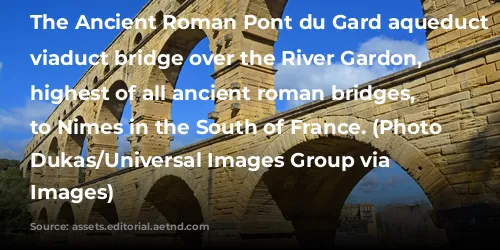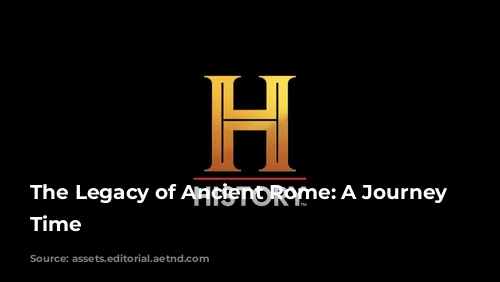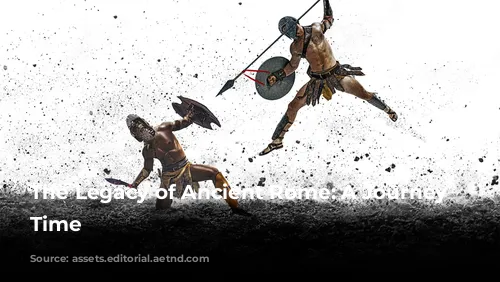The Roman Empire stands as a testament to human ingenuity and innovation. It’s a time capsule of incredible advancements that shaped the world we know today. From engineering feats to legal principles, medicine to literature, the Romans left a lasting imprint on civilization.

Engineering Wonders: Building a Legacy
Imagine a world without running water, sewage systems, or magnificent bridges. The Romans built the infrastructure that made such conveniences possible. At the heart of their urban development lay the aqueduct, a marvel of engineering that harnessed gravity to transport water to cities. These stone, lead, and concrete pipelines, some stretching over 60 miles, liberated cities from reliance on nearby water sources, promoting sanitation and public health. While not the inventors of the aqueduct, the Romans perfected its design, leaving behind structures still in use today. Rome’s iconic Trevi Fountain is fed by a restored aqueduct, a testament to the Romans’ enduring engineering prowess.
The Romans also mastered the art of concrete, a material that allowed them to build monumental structures like the Pantheon, the Colosseum, and the Roman Forum. Their concrete, though weaker than modern mixtures, was exceptionally durable. The secret lay in a unique recipe combining slaked lime, volcanic ash (pozzolana), and volcanic rocks (tuff). This combination created a cement that could withstand chemical decay and even set quickly underwater, enabling the construction of elaborate baths, piers, and harbors.

Spreading Information: Early Forms of Media
The Romans were masters of communication. They developed Acta Diurna, a forerunner of modern newspapers, which informed citizens about military victories, games, birth and death notices, and even human interest stories. These “daily acts” were written on metal or stone and posted in public areas like the Roman Forum, ensuring widespread dissemination of information. Acta Diurna even included a section detailing Senate proceedings, a precursor to the transparency we see in modern governments.
Social Welfare: A Vision for the Needy
While known for their military prowess and vast empire, the Romans also championed social welfare. They established programs to support the needy, providing subsidies for food, education, and other essential expenses. These initiatives, dating back to 122 BC, aimed to ensure the well-being of their citizens. The “alimenta” program, implemented under Emperor Trajan, offered support to orphans and poor children, providing them with food, clothing, and education. Though some historians argue these programs contributed to Rome’s economic decline, they highlight the Roman commitment to social responsibility.
Literary Innovations: Giving Rise to the Book
The Romans revolutionized the way we read. For centuries, literature was confined to unwieldy clay tablets and scrolls. The Romans, however, developed the codex, a stack of bound pages that became the earliest form of the book. Initially made from bound wax tablets, the codex evolved to use parchment, a material that more closely resembles modern pages. Julius Caesar is credited with creating an early version of the codex by stacking papyrus sheets, but bound codices didn’t gain popularity until the first century. Early Christians embraced this new technology, using it extensively to produce copies of the Bible.
A World Connected: The Legacy of Roman Roads
The vast Roman Empire, spanning nearly 1.7 million square miles, demanded an efficient system of communication and transportation. The Romans delivered with their roads, an ingenious network that connected every corner of their vast empire. These roads, many still in use today, were meticulously built with dirt, gravel, and bricks, and adhered to strict standards. Roman engineers created arrow-straight roads that curved to allow for drainage, ensuring a smooth and efficient journey. By 200 AD, over 50,000 miles of road crisscrossed the empire, facilitating military conquests and enabling rapid communication. These roads featured mile markers, signs, and even “highway patrols,” demonstrating the Romans’ attention to detail and dedication to efficient management.
Building for Eternity: The Triumph of the Arch
The arch, a simple yet powerful architectural element, played a pivotal role in Roman construction. While it existed for thousands of years, the Romans perfected its use in bridges, monuments, and buildings. The ingenious design of the arch allowed the weight of structures to be evenly distributed, preventing massive buildings like the Colosseum from collapsing under their own weight. Roman engineers improved the arch by flattening its shape, creating segmental arches that could span large gaps when used in bridges and aqueducts. The arch, along with columns, domes, and vaulted ceilings, became a defining element of Roman architecture.
Measuring Time: The Roman Calendar’s Enduring Influence
The modern calendar we use today has its roots in the Roman calendar. Early Roman calendars were based on the lunar cycle but were later modified to incorporate odd numbers, reflecting their belief in their importance. In 46 BC, Julius Caesar and the astronomer Sosigenes instituted the Julian calendar, aligning it with the solar year. This calendar, with its 12 months and 365 days, came remarkably close to perfection. However, a slight miscalculation in the length of the solar year led to a discrepancy that needed correction. The Gregorian calendar, adopted in 1582, addressed this issue by adjusting the schedule of leap years, creating the calendar we use today.
The Rule of Law: Shaping Legal Systems for Centuries
The Roman legal system has left an enduring legacy on modern law. The Twelve Tables, a code of laws adopted in 450 BC, served as the foundation of Roman law during the Republic. These tables covered areas such as property, religion, divorce, and punishments for crimes ranging from theft to witchcraft. However, the Corpus Juris Civilis, a comprehensive compilation of Roman law established by Emperor Justinian in the 6th century, had an even greater impact. This legal code introduced groundbreaking concepts like the principle of “innocent until proven guilty,” a cornerstone of modern legal systems. The Corpus Juris Civilis, along with English common law and Islamic law, remains a major influence on legal systems around the world.
Healing the Wounded: Roman Medicine on the Battlefield
Roman medicine, while not as advanced as modern medicine, made significant contributions. Their greatest advancements came in military medicine. Under the leadership of Emperor Augustus, a specialized medical corps was established, creating the world’s first dedicated field surgery units. These medics were trained in using tools like hemostatic tourniquets and arterial clamps to control bleeding, saving countless lives on the battlefield. They also performed physicals on new recruits and implemented sanitation measures to prevent disease in military camps. The Romans even pioneered the use of hot water to disinfect instruments, a form of antiseptic surgery that wouldn’t be fully embraced until centuries later. Roman military medicine was so effective that soldiers often lived longer than civilians despite the dangers they faced.
Conclusion
The Roman Empire left an undeniable legacy. From its engineering marvels to its legal system, from its literary innovations to its contributions to medicine, ancient Rome laid the foundation for the modern world. Their advancements in various fields, from sanitation and infrastructure to communication and law, serve as a constant reminder of the power of human ingenuity and the enduring impact of civilization.
